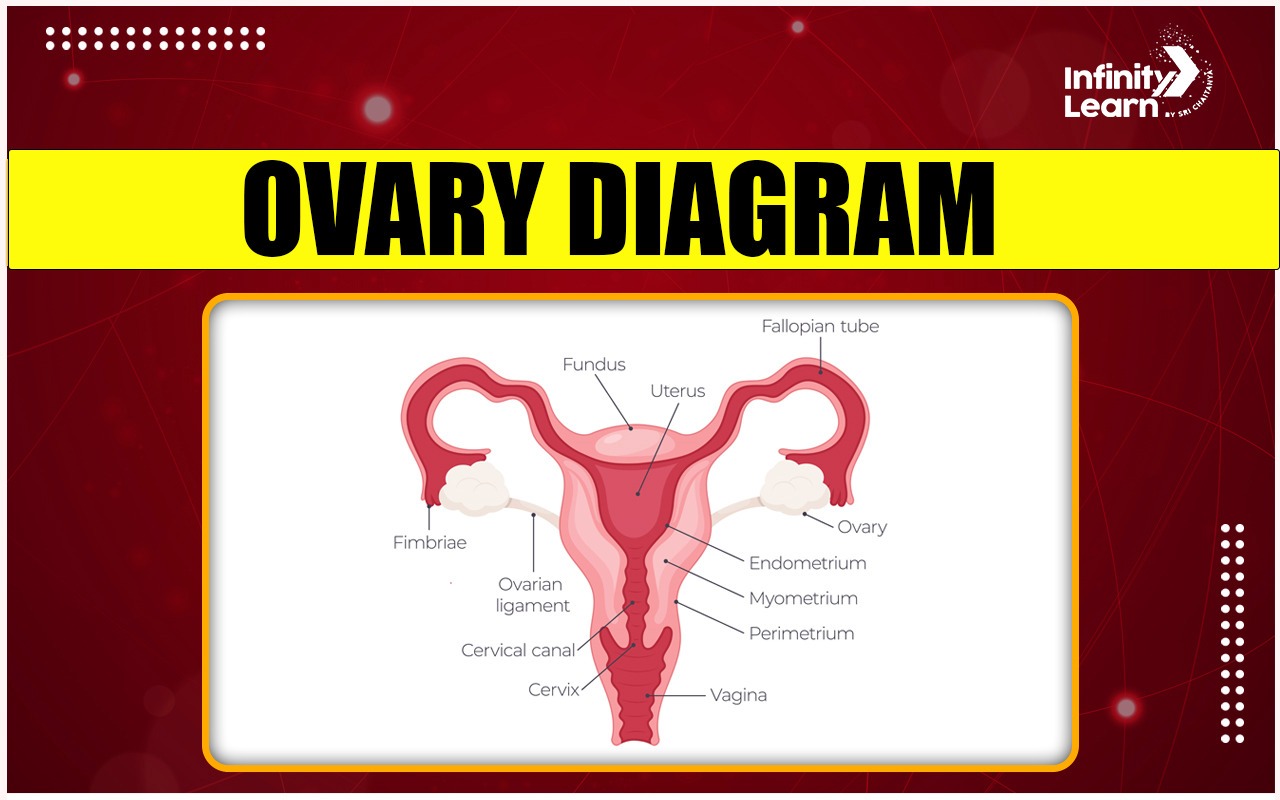
Courses

By Shailendra Singh
|
Updated on 14 Jan 2025, 13:11 IST
The ovary is a key part of the female reproductive system. It creates eggs, also known as ova, which are not able to move on their own. When a moving sperm cell fertilizes an egg, they form a zygote. Additionally, the ovaries function as endocrine glands, releasing hormones in females. Let’s take a look at the structure of an ovary with a detailed diagram.

The ovary is found in the pelvic region, close to the uterus. Its main job is to produce and release eggs for possible fertilization. The ovary has two parts: the outer layer, called the cortex, and the inner part, known as the medulla. In the cortex, there are structures called ovarian follicles where eggs grow. Blood vessels and lymphatic vessels provide the ov with nutrients and oxygen and help get rid of waste. This is the basic structure of the ovary.
The ovary plays a key role in the menstrual cycle, which is important for reproduction and fertility. The cycle includes several main stages:
Follicular Phase: This phase starts the menstrual cycle. Ovarian follicles grow with the help of follicle-stimulating hormone (FSH). The growing follicles produce estrogen, which helps thicken the uterine lining.
Ovulation: Around the middle of the cycle, a surge in luteinizing hormone (LH) causes ovulation. During this process, a mature egg is released from the ovary into the fallopian tube, where it can meet sperm and be fertilized.
Luteal Phase: After ovulation, the leftover follicle turns into the corpus luteum, which produces progesterone. Progesterone keeps the uterine lining thick, ready for a possible embryo. If pregnancy doesn’t happen, the corpus luteum breaks down, hormone levels drop, and menstruation starts, beginning a new cycle.
Puberty: Ovaries start to release eggs and produce hormones, leading to menstruation.
Reproductive Years: Ovaries continue to release eggs monthly and produce hormones regularly.
Menopause: Ovaries gradually stop releasing eggs and hormone levels decrease, ending the menstrual cycle.


The ovary is located in the lower abdomen on each side of the uterus.
The human ovary is a small, oval-shaped organ with a surface layer, cortex, medulla, and hilum.
A female typically has two ovaries.
In plants, the ovary is the part of the flower that contains the ovules and develops into fruit after fertilization.
The ovary of a flower is the part that holds the ovules and becomes the fruit after fertilization.
In biology, the ovary is the female reproductive organ that produces eggs and hormones.
The four layers of the ovary are the germinal epithelium, cortex, medulla, and hilum.
The ovary is located in the lower abdomen on either side of the uterus.
The ovary is a female reproductive organ that produces eggs and hormones and plays a key role in the menstrual cycle and fertility.
The four layers are the germinal epithelium, cortex, medulla, and hilum.
The ovary is located in the lower abdomen on either side of the uterus.
The ovary is a small, oval-shaped female reproductive organ that produces eggs and hormones.